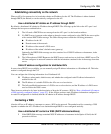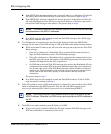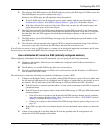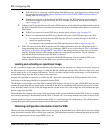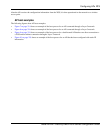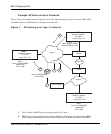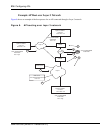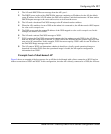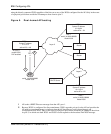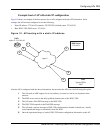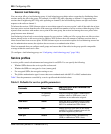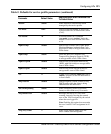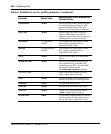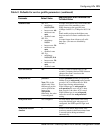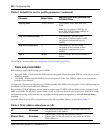
Configuring APs 217
Nortel WLAN—Security Switch 2300 Series Configuration Guide
1 The AP sends DHCP Discover message from the AP’s port 1.
2 The DHCP server replies with a DHCP Offer message containing an IP address for the AP, the default
router IP address for the AP’s IP subnet, the DNS server address, and the domain name. AP then sends a
DHCP Request message to the server and receives an Ack from the server.
3 The AP sends a broadcast Find WSS message to the IP subnet broadcast address.
4 When the AP is unable to locate a WSS on the subnet it is connected to, the AP then sends a DNS request
for wlan-switch.example.com.
5 The DNS server sends the system IP address of the WSS mapped to wlan-switch.example.com. In this
example, the address is for WSS1.
6 The AP sends a unicast Find WSS message to WSS1.
7 WSS1 receives the Find WSS message and compares the bias settings on each WSS for the AP. More
than one WSS has a high bias for the AP, so WSS1 selects the WSS that has the greatest capacity to add
new active AP connections. In this example, WSS1 has more capacity. WSS1 sends its own IP address in
the Find WSS Reply message to the AP.
8 The AP contacts WSS1 and determines whether it should use a locally stored operational image or
download it from the WSS. Once the operational image is loaded, the AP requests configuration
information from WSS1.
Example boot of dual-homed AP
Figure 9 shows an example of the boot process for an AP that is dual homed with a direct connection to WSS1 and an
indirect connection to WSS2 and WSS3. In this configuration, since the AP is directly connected to a WSS, the AP boots



